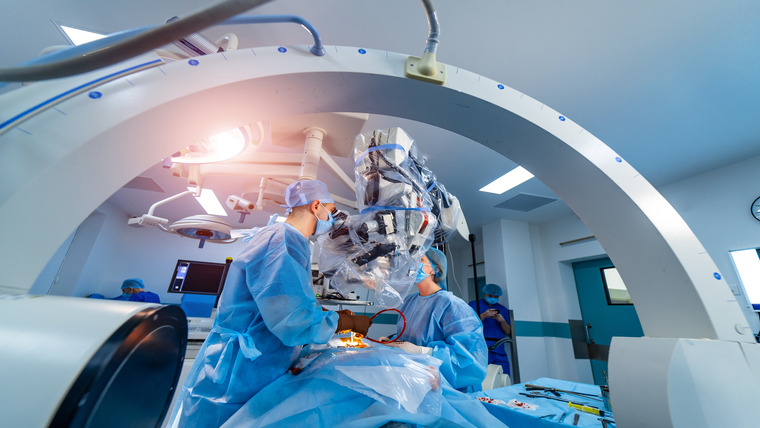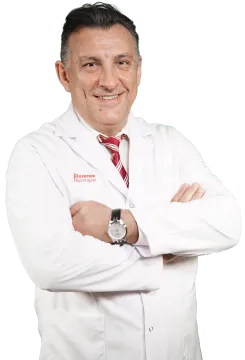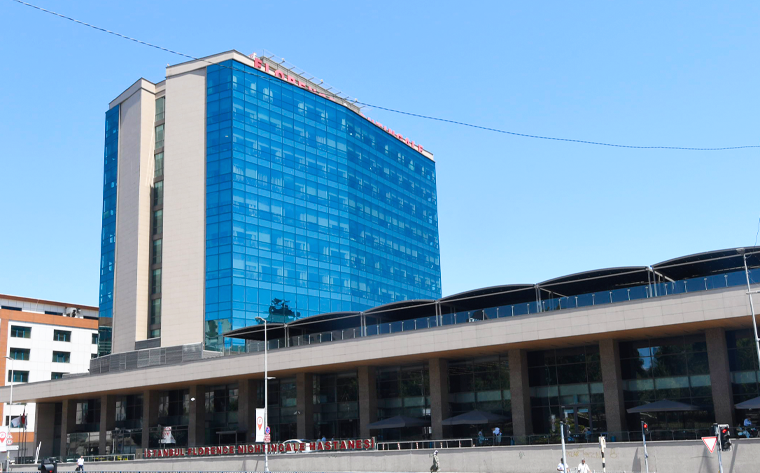_1.webp?ext=.webp)
What is a Robotic Surgery Center? What are the Diseases Treated with Robotic Surgery?
Robotic Surgery Center is a health unit where surgical interventions are performed using advanced robotic technologies. These centers aim to accelerate the recovery process of patients and increase the effectiveness of surgical interventions by allowing surgeons to perform more precise and controlled operations. Robotic surgery provides a great advantage, especially in operations in hard-to-reach areas. In these centers, there are diseases treated with robotic surgery in many areas such as cancer surgery, cardiovascular surgery, urology, gynecology.
About Robotic Surgery Center
The Robotic Surgery Center is a healthcare unit equipped with advanced technologies and consists of professionals specialized in robotic surgery applications. These centers offer patients less pain, faster recovery time and smaller surgical incisions with minimally invasive surgical techniques. In the Robotic Surgery Center, patient treatment processes are planned and implemented in line with the latest technological devices and medical protocols.
Who are the Specialists in the Robotic Surgery Center and What Are Their Duties?
The specialists working in the Robotic Surgery Center consist of doctors, surgeons, anesthesiologists and nurses who are experts in the use of robotic systems required for surgical interventions. While surgeons perform delicate operations using robotic systems, anesthesiologists ensure that patients remain safely under anesthesia during the operation. Nurses manage the pre- and post-operative care processes.
What is done in the Robotic Surgery Center?
At the Robotic Surgery Center, surgeons perform delicate and complex surgical interventions using robotic systems. These systems provide surgeons with greater precision, flexibility and control during the operation. Robotic surgery is used to perform procedures that are particularly difficult or impossible with traditional surgical methods.
Operations are usually performed through small incisions in the skin and other tissues; this method is called minimally invasive surgery. The advantages of minimally invasive surgery include a reduced risk of complications (such as surgical site infection), less pain and blood loss, shorter hospital stays, faster recovery, and smaller, less noticeable scars. Robotic surgery offers these advantages, making recovery easier for patients.
What are the procedures and examinations performed at the Robotic Surgery Center?
The procedures performed at the Robotic Surgery Center are generally performed using minimally invasive surgical methods. In this center, surgeons perform various complex and delicate operations with the help of robotic systems. The procedures performed include cancer surgery, cardiovascular surgery, urological surgeries (such as prostate and kidney surgeries), gynecological surgeries, and digestive system surgeries. These procedures can be performed more successfully and safely thanks to the precision and control provided by the robotic system.
Tests are performed to assess the patient's condition and determine the need for surgery before surgery. These tests include blood tests, imaging techniques such as MRIs, CT scans, and ultrasounds. Biopsies may also be used as part of the pre- and post-operative evaluation process. Tests play a critical role in planning the surgical intervention and monitoring the success of the operation.
What are the diseases treated at the Robotic Surgery Center?
A wide range of diseases are treated at the Robotic Surgery Center. The precision and minimally invasive techniques provided by robotic surgery allow it to be used effectively in the treatment of various complex and difficult diseases.
The main diseases treated are:- Types of Cancer: Robotic surgery is used in surgical interventions, especially for organs such as prostate, kidney, uterus, bowel and lung cancers. This method allows for precise removal of tumors and reduces the risk of damage to surrounding tissues.
- Cardiovascular Diseases: Robotic surgery can be used in cardiovascular surgery, heart valve repairs, bypass surgeries, and other types of heart surgery. This method allows surgeons to perform procedures with smaller incisions and a less invasive approach.
- Urological Diseases: Robotic systems are widely used in prostate cancer surgeries, removal of kidney tumors, kidney transplantation and other urological surgeries. This method provides a great advantage, especially in cases requiring precision in prostate cancer surgery.
- Gynecological Diseases: Robotic surgery is preferred in the treatment of gynecological diseases such as uterus (hysterectomy), myomas, endometriosis and pelvic organ prolapse. This method helps to perform surgical interventions in women's health more safely and effectively.
- Digestive System Diseases: Robotic systems are also used in surgeries for digestive system organs such as the stomach, intestines and pancreas. Such surgeries can be performed more precisely and safely with the advantages offered by robotic surgery.
- General Surgery: General surgical procedures such as gallbladder surgeries, hernia repairs, and obesity surgery can also be performed with robotic surgery. This method helps patients recover faster and experience fewer post-operative complications.
Robotic surgery is used in the treatment of these and many similar diseases, providing patients with a less invasive and more effective treatment option.
What Tests Are Performed at the Robotic Surgery Center?
At the Robotic Surgery Center, patients undergo various tests before and after surgery. These tests include blood tests, imaging tests (MRI, CT, ultrasound) and biopsies. These tests are performed to evaluate the patient's general health, determine the necessity of surgical intervention and monitor the post-operative recovery process.
What Health Technologies Are Used in the Robotic Surgery Center?
The health technologies used in the Robotic Surgery Center are designed to make surgical operations safer, more effective and more successful. These technologies include robotic surgical systems (such as da Vinci), advanced imaging devices, three-dimensional imaging systems and surgical instruments specially designed for minimally invasive surgery. These technologies allow surgeons to make more precise movements during the operation and to have a better view of the operation area.




.webp?lang=tr-TR&ext=.webp)




